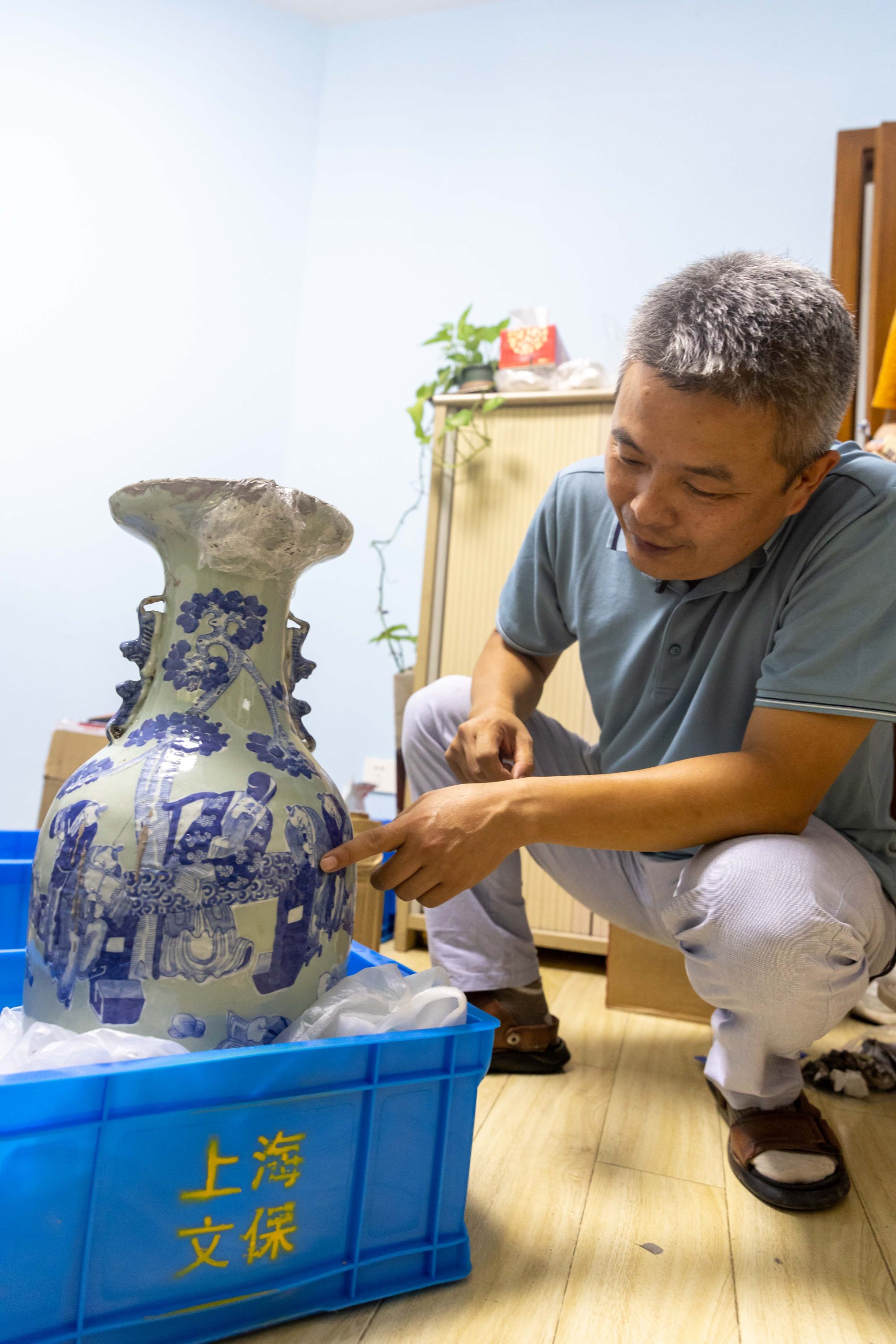
Hundreds of artefacts excavated from Qing-era shipwreck in the Yangtze
- The artefacts are mostly porcelain and ceramics likely made in the famous artisan city Jingdezhen
- The wreck is a famous historical site, but it has never been excavated at this scale
A team of archaeologists has excavated over 600 artefacts from a famous Qing dynasty shipwreck at the bottom of a Yangtze River estuary in Jiangxi province in eastern China near Shanghai.
Called the Yangtze River Estuary No.2 project, the shipwreck is China’s largest and best-preserved wooden shipwreck.

Zhai Yang, vice-director of the Shanghai Cultural Heritage Conservation and Research Center, told state-run news channel CGTN: “Due to long-time seawater corrosion, this green-glazed cup appears slightly brown. However, it represents a cultural exchange between China and the world during the early days of Shanghai’s opening up as a trade port.”
The wooden sailing ship was likely wrecked during the reign of the Tongzhi Emperor (r. 1861-1875) of the Qing dynasty (1644-1912).
Tongzhi and his mother, Empress Dowager Cixi (who was never an official ruler but essentially ran China between 1861 and 1908), attempted to open China to the world from 1860–1874 in a policy called the Tongzhi Restoration.
The hope was that an economic and intellectual opening in China would help slow the collapse of the Qing dynasty. One consequence was it revitalised Shanghai as a major port city, a status it still holds today.
The relics discovered at Yangtze River Estuary No.2 are a testament to this history, as they blend Chinese and Western traditions and aesthetics.
Liu Zheng, a China Cultural Relics Academy member, told the Global Times: “Such porcelain items show how well China could ‘digest’ Western cultures, and it embraced such cultures 100 years ago.”
He added that similar European approaches inspired the porcelain techniques in China at that time.

Besides the green cup, other relics included beautiful porcelain tea cups, large vases, bowls and plates.
The plan for the ship moving forward is to surround it in a watertight chamber called a cassion that will allow scientists to excavate the boat in a dry environment. That project is expected to take two to three months from start to finish.
After the excavation, scientists hope to reconstruct the ship’s life to learn more about maritime technology during that period of the Qing dynasty and its transport routes.
Chinese underwater excavation has been in the news in recent weeks. In early September, archaeologists retrieved artefacts from a South China Sea shipwreck at a depth of around 3,000 metres, making it the country’s deepest-ever underwater excavation.

